1-1. Definition of TOD
1-2. Concept of TOD
1-3. introduction of TOD
1-4. TOD, according to location
1-5. Seven principles of TOD design
1-6. TOD Status
1-7. Advantages of TOD
2.Case - Domestic(Yong In), Oversea(Curitiba)
2-1. Yong in
2-1-1. Definition of LRT
2-1-2. The reason of LRT background
2-1-3. Advantage of LRT in Yong in
2-1-4. Disadvantage of LRT in Yongin
2-2-1. Installed of BRT.
2-2-2. Feeder bus securing
2-2-3. Provide direct service in wide area network
2-2-4. The surface bus system
2-2-5. The social fare
3.Conclusion
1-1. Definition of TOD
The way emphasizing land use and the relevance of transportation and inducing the complex land use of public transportation center and walking – riendly transportation system environment. In terms of Urban planning TOD is recognized as techniques that controls extensional reckless city spread and changes traffic-patterns of cars-centric to public transportation and traffic-patterns of Green transportation-oriented TOD concept is defined by 《The Next American Metropolis》
1-2. Concept of TOD
Pursuing foot-traffic areas and the development of higher-density, mixed-area within a radius of 1/4mile(600m) from LRT(Light Rail Transit) or BRT(Bus Rapid Transit). TOD develops residential, workplace, business, and commercial facilities of mixed-area into high-density by Public transportation Except cars. As Car-centric suburbs change Transit network, city achieve proper infrastructure investment and mixed-area is more interesting, convenient, active
1-3. Introduction of TOD
New urbanism - New Urbanism is an urban design movement which promotes walkable neighborhoods containing a range of housing and job types. It arose in the United States in the early 1980s, and has gradually reformed many aspects of real estate development, urban planning, and municipal land-use strategies.
Smart growth - Smart growth is an urban planning and transportation theory that concentrates growth in compact walkable urban centers to avoid sprawl. It also advocates compact, transit-oriented, walkable, bicycle-friendly land use, including neighborhood schools, complete streets, and mixed-use development.
1-4. TOD, according to location
그림1 Location of TOD
Urban TOD - High-density business-oriented Of companies, large-scale shopping centers, high-density residential appear.
Neighborhood TOD - the medium-density residential, services, retail, entertainment, civic, and hobby purposes place appear.
1-5. Seven Principles of TOD design
1)Keeping levels of high-density public transportation services that can be provided
2)placing Station Residential, commercial, workplace, public facilities such as parks
within Walking Distance
3) configuring pedestrian-friendly street network
4) mixed arranging housing of type, density, cost
5) providing Quality of the natural environment and open space
6) making Public space center of building arrangement and neighborhood living
7) Promoting redevelopment along transportation routes within Living neighborhoods
성현곤, 김옥연, 김진유. 대중교통지향형개발(TOD)의 의의와 바람직한 개발방향
http://blog.daum.net/_blog/BlogTypeView.do?blogid=0NfCx&articleno=1057&categoryId=2®dt=20081231160500#ajax_history_home
성현곤, 박지형, 김동준. 대중교통지향형 도시개발의 효과분석 및 유도기법 적용 방안”
http://ko.wikipedia.org/wiki/
http://blog.naver.com/ktn208?Redirect=Log&logNo=120143434469
용인시, 철도 중심 교통도시로 ‘재탄생’
권영종 - TOD측면에서 본 우리나라 신도시 개발의 문제점과 개선방향-2006
조규만, 조영태 – 대중교통지향형 도시개발을 위한 계획요소 분석에 관한 연구-한국도시행정학회 도시행정학보 제 24집 제 3호 2011. 6 p.307~325
신임호 - 서울시 지하철 유동 통행에 영향을 미치는 대중교통지향형개발(TOD) 계획요소의 통합유형화 및 실증분석
http://blog.naver.com/jjy6967?Redirect=Log&logNo=130009663105
http://news1.kr/articles/802503
http://www.newscj.com/news/articleView.html?idxno=156967
“서울 지하철에서 길을 잃다” News1 Korea – 박선우 기자 – 2012-09-09
보행자 중심 ‘걷기 좋은 도시’ 만든다 건설타임즈.co.kr - 이현규 기자 – 2012-10-31
http://ubin.krihs.re.kr/2009/php/wurban/city_info_intro.php?frommain=1&no=95
박용남. 시민을 존경하는 ‘희망의 도시’:꾸리찌바-교통전책을 중심으로
지속가능한 도시-꾸리찌바
http://blog.naver.com/hahe6015?Redirect=Log&logNo=55737381

- 오늘 본 자료가 없습니다.
- 최근 개인정보보호와 인권이 강화되고 있습니다 감염병관리에서 개인정보보호와 정보공개를 통해 방역관리를 하는 부분이 논의가 되었다 정보공개를 찬성하는지, 반대하는지를 선택하고, 사회복지자로서 이에 대한 자신의 의견과 이유를 작성하세요
- 현대사회에서 가족의 기능에는 성적욕구 충족 및 통제의 기능, 자녀출산, 양육, 사회화의 기능, 돌봄의 기능, 경제적 기능, 사회적 지위 부여의 기능, 애정적 기능, 휴식 및 오락의 기능이 있다 이 중 가장 중요하다고 생각하는 기능에 대해 밝히고 그 이유에 대해 토론하시오
- 대상자에 대해 위기개입 모델을 활용하여 어떤 서비스를 제공할 수 있는지에 대해 서술하시오
- 가정을 만들기 위해 우리 사회에 필요한 가족이나 가정정책 및 개선방향을 제언하시오
- 스웨덴의 사회복지역사를 A4 2장 이내로 정리하시오
- 우리나라 사회복지기관 운영주체에서 공공조직 하이브리드조직 민간조직의 운영주체에 따른 3가지 유형의 사회복지조직의 사례
- 언어발달 3가지 이론의 특징을 각각 제시하고 각 이론의 한계점을 서술한 후 본인의 의견을 반영하여 작성하시오
- 지역사회복지실천의 실천과정에 대해 단계별로 서술하고, 지역사회개발 모형에서 사회복지사가 가져야 할 여러 역할 중에 가장 중요하다고 생각되는 하나를 정하여 그 이유를 작성하시오.
- 정신건강론] 현대를 살아가는 청소년들의 정신건강에 영향을 미치는 문제들은 어떤 것이 있으며 이를 극복하기 위한 방안을 제시하시오
- 아동건강교육] 아동기에 나타나는 행동장애와 정서장애 2가지 이상을 설명하시오
해당 정보 및 게시물의 저작권과 기타 법적 책임은 자료 등록자에게 있습니다. 위 정보 및 게시물 내용의 불법적 이용,무단 전재·배포는 금지되어 있습니다. 저작권침해, 명예훼손 등 분쟁요소 발견 시 고객센터에 신고해 주시기 바랍니다.



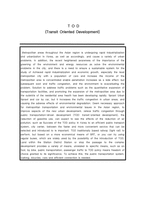
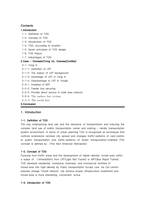
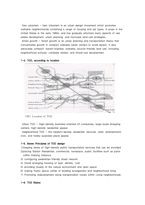
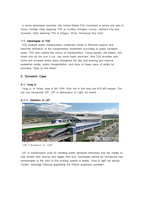


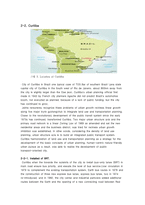
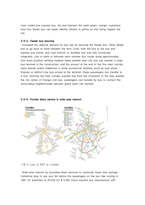
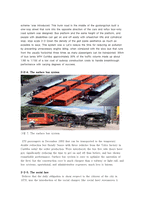
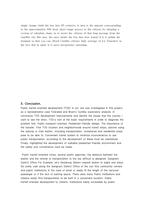
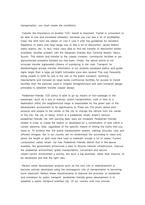
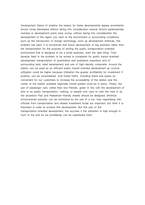

 분야
분야

